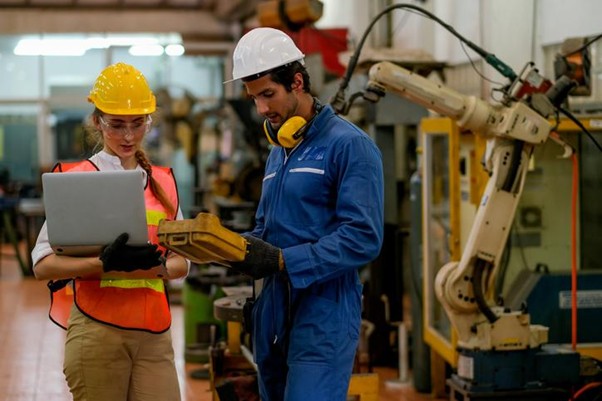ISO 10218 Industrial Robot Safety Standard Receives Major Overhaul

(Source: therobotreport.com)
By: The Robot Report Staff
Industrial robots have changed manufacturing landscape by delivering enhanced efficiency, precision, and scalability. However, as robotics system become more interconnected and collaborative, ensuring the safety of human workers remains a critical concern. Recognizing the need to modernize safety measures, the International Organization for Standardization (ISO) has released a significant update to its key industrial robot safety standards. This marks the first major change in ISO 10218 since the year 2011, the growing complexity of industrial machinery and risks ranging from functional failures to cybersecurity threats.
The modern form moreover coordinating collaborative robot security rules (already found in ISO/TS 15066), which may be a huge bargain for manufacturing plants where people and robots work side by side. The overhaul moreover moves forward security measures for manual load/unload errands and apparatuses like grippers or welding arms. On beat of that, a modern robot classification framework has been presented, beside better-defined security testing conventions, permitting companies to tailor security plans to their particular utilize cases.
The new and revised standards is split into two parts:
- Part 1 focuses on safety requirement for robot manufacturers
- Part 2 addresses safety in robot implementations and systems, geared towards integrators
The unused standard is anticipated to essentially affect mechanical security directions over North America. Both the U.S.-based ANSI R15.06 and Canada’s CSA Z434 measures are right now being overhauled to adjust with the changed ISO rules. In spite of the fact that full selection timelines are still in advance, specialists are empowering companies to start adjusting their operations instantly.
Both parts have experienced broad corrections to address the most recent security challenges and mechanical progressions, including:
- Clarified utilitarian security necessities that offer more exact security rules to improve compliance and chance relief.
- Coordinates security necessities for collaborative robot applications that solidify the already isolated ISO/TS 15066.
- Joined security direction for manual load/unload strategies and end-effectors (now and then called end-of-arm tooling or EOAT) from already isolated specialized reports (TR 20218-1 and TR 20218-2).
- Modern robot classifications with comparing useful security necessities and test strategies.
- Cybersecurity prerequisites relating to mechanical robot security.
Industry examiners say the modern standard postures both challenges and openings. Whereas organizations may have to be contribute in overhauled sensors, AI-based checking frameworks, and upgraded preparing programs, these measures are anticipated to decrease obligation dangers and make more secure, more versatile fabricating situations.
As mechanical robotization proceeds to advance, ISO’s overhauled system may be a convenient update that security must advance nearby innovation. Specialists expect encourage upgrades within the coming a long time, particularly as collaborative robots ended up more commonplace in savvy manufacturing plants.
References:




Comments :